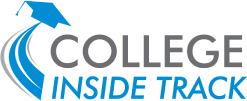2 valuable college planning changes in the SECURE Act
The Setting Every Community Up for Retirement (SECURE) Act signed into law at the end of 2019 includes two significant college planning changes that families need to know about.
529 Plans can now be used to repay student loans
Previously, 529 Plans could be used for qualified college expenses and $10,000 annually of K-12 tuition. The SECURE Act now allows families to pay for qualified educational loans with 529 Plan dollars, with a lifetime limit of $10,000 for the 529 Plan beneficiary, and each of his or her siblings.
So a family with two children could use 529 Plan dollars to pay up to $10,000 of loans for each child, for a total of $20,000.
Note that student loan interest paid for with 529 plan dollars is then not eligible for the student loan interest deduction.
New option for grandparents
 This change opens up an additional interesting possibility for grandparents, who could also pay up to $10,000 of loans for a grandchild and each of his or her siblings.
This change opens up an additional interesting possibility for grandparents, who could also pay up to $10,000 of loans for a grandchild and each of his or her siblings.
Grandparents are often caught in a conundrum with any 529 Plan they own. While grandparent 529 Plan assets are not disclosed on the student’s FAFSA, the distribution of those dollars is treated as untaxed income and are assessed on the FAFSA at 50%, compared to parent-owned 529 Plans that are assessed at 5.64%.
There is a workaround strategy, where the grandparent delays any distributions until after Jan. 1 of the sophomore year, but this new change increases the flexibility with how grandparents can use 529 Plans and if used to pay for loans, would also have no negative impact on the grandchild’s financial aid package.
With the changes to stretch IRA’s, this opens up another potential strategy for grandparents to pass along assets in a favorable way.
529 Plans can now be used for apprenticeship programs
 While 529 Plans could previously be used for trade schools, apprenticeship programs were not considered a qualified expense until now. The apprenticeship program must be certified with the Department of Labor; click here for the list of eligible programs.
While 529 Plans could previously be used for trade schools, apprenticeship programs were not considered a qualified expense until now. The apprenticeship program must be certified with the Department of Labor; click here for the list of eligible programs.
Qualified apprenticeship-related expenses include textbooks, fees, required equipment and supplies.
Caution! Check non-conforming states
While the 529 Plan enhancements as a result of the SECURE Act are terrific news, it is unfortunately not quite as exciting for families living in the handful of states that do not conform with federal law and the changes enacted in the Tax Cuts and Jobs Act (TCJA). Because this list changes, please consult with your tax professional to see if this is an issue for you.
If you do live in a state that is non-conforming, be advised that 529 plan distributions used to pay for apprenticeship costs or student loans may be considered non-qualified. This means those dollars could be subject to state income tax on the earnings portion of the distribution as well as penalties.
Even if your state does not conform, you are still able to take advantage of the federal tax benefits if you choose.
